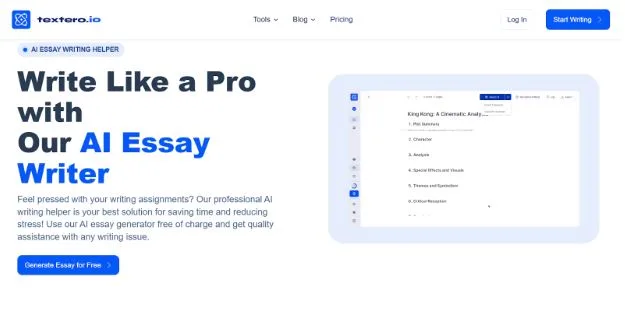Top 10 OWASP Principles That Any U.S. Web Application Developer Must Know
Web applications in 2025 are no longer mere tools — they’ve become the lifeline of almost every company in the United States. With users needing faster, smarter, and more secure online experiences, developers are under eternal pressure to create dependable and secure web applications.
But security tends to be an afterthought in the haste of development cycles — until a breach happens. That’s why the Open Web Application Security Project (OWASP) is still needed. Its world-renowned tenets guide developers to build secure, high-performing web applications that can weather today’s cyber attacks.
Whether you’re a solo developer or work for a web app development firm in USA, these are the top 10 OWASP principles you must learn in 2025.
1. Injection Prevention (SQL, NoSQL, and Command Injections)
Injection flaws allow attackers to inject malicious queries to databases or servers. This might result in data theft, corruption, or full system compromise.
Best Practices:
- Utilize prepared statements and parameterized queries.
- Validate and sanitize all inputs.
- Use ORM frameworks to handle queries securely.
2. Secure Authentication and Session Handling
Weak authentication systems are an open invitation to hackers. In 2025, secure login and session handling are not optional.
Best Practices:
- Use multi-factor authentication (MFA).
- Use secure, short-lived session tokens.
- Hash and salt all stored passwords.
3. Cross-Site Scripting (XSS) Defense
XSS vulnerabilities enable attackers to inject nasty scripts into web applications, usually resulting in stolen cookies or hijacked sessions.
Best Practices:
- Encode user inputs in HTML, JavaScript, and CSS.
- Implement a Content Security Policy (CSP).
- Utilize libraries that escapeshot automatically.
4. Access Control and Authorization
Authentication is not enough; even with it, badly controlled permissions can allow users to access data they should not have access to.
Best Practices:
- Implement “Least Privilege” — only give what’s needed.
- Implement Role-Based Access Control (RBAC).
- Regularly test authorization logic using penetration tools.
5. Security Misconfiguration
Security misconfigurations — such as open cloud buckets or default credentials — rank among the leading reasons for data breaches.
Best Practices:
- Automate config management.
- Shut down unused ports and services.
- Update servers, APIs, and frameworks regularly.
6. Sensitive Data Exposure
Sensitivity data exposure of payment details or individual information can devastate user trust.
Best Practices:
- Utilize HTTPS with TLS 1.3 or later.
- Encrypt data both at rest and during transit.
- Do not log or show sensitive information.
7. Cross-Site Request Forgery (CSRF) Defense
CSRF attacks mislead users into executing undesired actions on trusted applications.
Best Practices:
- Utilize CSRF tokens for all state-modifying requests.
- Enforce SameSite cookies.
- Validate the request’s origin server-side.
8. Logging, Monitoring, and Incident Response
Security incidents that go undetected can escalate into complete breaches. Monitoring and logging are key to early discovery.
Best Practices:
- Log all significant actions such as failed login or data export.
- Configure alerts with SIEM tools.
- Regularly test and revise your incident response plan.
9. Using Components with Known Vulnerabilities
Third-party packages accelerate development but pose risks if not patched.
Best Practices:
- Utilize dependency scanners such as Snyk or OWASP Dependency-Check.
- Keep libraries up-to-date.
- Remove unsupported frameworks as soon as possible.
10. Security by Design (Shift-Left Security)
“Shift-left security” is the 2025 standard of modern custom web app development services embedding security early within the design process rather than post-deployment.
Best Practices:
- Integrate security testing into your CI/CD pipeline.
- Threat modeling during planning.
- Secure coding training for your team.
Why OWASP Still Matters in 2025
With advanced cyber threats using AI-powered exploits and automated attack tools, OWASP guidelines are more important than ever. They offer a robust framework for developing secure, scalable, and compliant web applications.
For a USA web app development organization, complying with these guidelines not only avoids vulnerabilities but also fosters client confidence and supports compliance with data privacy legislations such as GDPR and CCPA.
Final Thoughts
Security isn’t a checkbox — it’s a mindset. In 2025, any web app developer should take OWASP’s Top 10 as an actionable guide to secure coding.
By integrating these guidelines into your workflows, you can create applications that provide glitch-free performance and counter contemporary threats.
In case your organization requires the upgrade, audit, or fortification of its applications, the collaboration with a seasoned web app development company in USA can assist you to effectively integrate OWASP standards into your digital infrastructure.
FAQs: OWASP Principles for Web App Developers
1. What is OWASP and why is it important for web app developers?
OWASP (Open Web Application Security Project) is a global community that provides free resources and standards for improving web application security. For web app developers, following OWASP guidelines ensures apps are built to resist common cyberattacks, protecting both users and business data.
2. How do OWASP principles benefit a web app development company in USA?
A web app development company in USA that follows OWASP principles can deliver safer, more reliable applications. It helps reduce vulnerabilities, ensures compliance with data protection laws like GDPR and CCPA, and builds trust among clients who expect secure digital solutions.
3. Which OWASP vulnerabilities are most critical in 2025?
In 2025, the most critical vulnerabilities include Injection Attacks, Broken Access Control, and Security Misconfigurations. These remain top priorities due to their widespread exploitation in both enterprise and consumer-facing web applications.
4. How can businesses make sure their web apps meet OWASP standards?
Businesses can partner with experts who specialize in custom web app development services and OWASP compliance. These professionals integrate security checks into every stage — from design and development to deployment and maintenance — ensuring your app stays protected long-term.
- Is following OWASP principles enough to secure my application?
OWASP provides an excellent foundation, but ongoing security requires regular audits, updates, and testing. Combining OWASP principles with proactive monitoring, penetration testing, and team training ensures stronger, end-to-end security for modern web apps.



